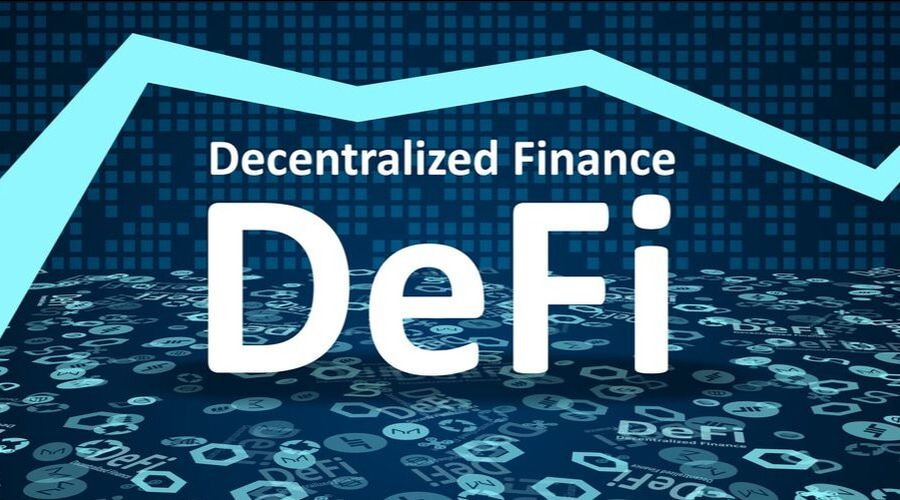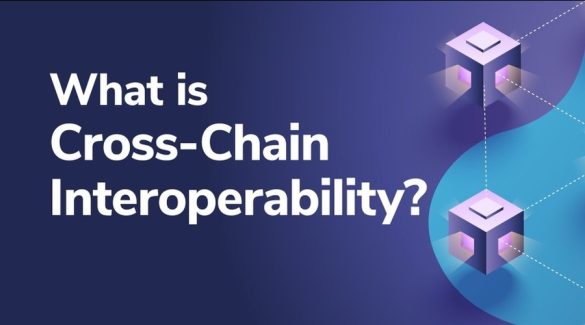Cross-chain interoperability has emerged as a crucial aspect of blockchain technology, enabling different blockchain networks to communicate and share data seamlessly. In this article, we will explore the concept of cross-chain interoperability in Layer 2 solutions. Layer 2 solutions are designed to enhance the scalability and efficiency of blockchain networks, and cross-chain interoperability plays a vital role in enabling communication and data exchange between these solutions.
What is Cross-chain Interoperability?
It is refers to the ability of different blockchain networks or Layer 2 solutions to communicate, exchange data, and transfer assets across multiple chains. It allows users to interact with various blockchain networks without needing to convert their assets to a specific native token of each network. Cross-chain interoperability aims to break down the silos between different blockchains, fostering collaboration and synergy among decentralized ecosystems.
Importance of Cross-chain Interoperability
The importance of cross-chain can be understood through the following aspects:
- Enhanced Liquidity: It enables the seamless transfer of assets and tokens between different blockchain networks. This interoperability increases liquidity by expanding the market reach and accessibility of assets. Users can trade and exchange assets across multiple chains, leading to deeper liquidity pools and improved price discovery. The ability to move assets freely between chains promotes efficiency and reduces barriers to entry for users, ultimately fostering a more vibrant and dynamic blockchain ecosystem.
- Expanded Use Cases: It unlocks new possibilities for decentralized applications (dApps) and use cases. It allows developers and users to leverage the unique features and functionalities of different chains, combining them to create more robust and innovative applications. For example, cross-chain interoperability enables the integration of different DeFi protocols, enabling composability and the creation of complex financial products. It also facilitates the interoperability of NFTs, enabling cross-chain ownership, trading, and utilization of digital assets.
- Interconnected Blockchain Ecosystem: Cross-chain interoperability promotes collaboration and synergy among different blockchain networks. It breaks down the silos that exist between chains, fostering a connected ecosystem where information, assets, and data can flow seamlessly. This interconnectedness encourages knowledge sharing, cross-chain collaborations, and the development of interoperable standards. By working together, different chains can leverage their strengths and collectively drive innovation, scalability, and adoption in the blockchain space.
- Improved Scalability and Performance: Cross-chain interoperability addresses the scalability challenges faced by individual blockchain networks. By utilizing Layer 2 solutions and off-chain transactions, it reduces congestion on the main chains and improves overall scalability. Cross-chain interoperability allows for the offloading of transactions and computations to secondary layers, enhancing the throughput and performance of the entire system. This scalability improvement is crucial for accommodating increased transaction volumes and supporting applications with high demands.
Layer 2 Solutions for Cross-chain
State Channels
State channels are Layer 2 solutions that enable off-chain transactions between participants. By conducting most transactions off-chain, state channels significantly enhance scalability and reduce transaction costs. Cross-chain can be achieved by connecting state channels across different chains, allowing users to transfer assets seamlessly.
Plasma
Plasma is another Layer 2 solution that provides scalability through the creation of sidechains. These sidechains can handle a large number of transactions while periodically committing the final state to the main blockchain. By establishing communication channels between different Plasma chains, cross-chain can be achieved.
Sidechains
Sidechains are independent blockchains that are interoperable with the main blockchain. They allow for faster transaction processing and can host specific applications or use cases. Interoperability between sidechains can be facilitated through secure two-way pegs or bridges, enabling assets and data transfer between chains.
Rollups
Rollups are Layer 2 solutions that bundle multiple transactions into a single transaction, reducing the computational load on the main blockchain. By combining multiple transactions, rollups enhance scalability and reduce transaction costs. Cross-chain can be achieved by connecting rollup solutions across different chains, enabling seamless asset transfer and data exchange.
Challenges in Achieving Cross-chain Interoperability
- Scalability Issues: Scalability is a fundamental challenge in achieving cross-chain interoperability. Blockchain networks often face limitations in terms of transaction throughput and processing speed. As the number of connected chains increases, the scalability challenges become more significant. Layer 2 solutions, such as state channels, plasma, sidechains, and rollups, help address these issues by offloading transactions and computations to secondary layers while maintaining the security guarantees of the underlying blockchain.
- Consensus Mechanisms: Different blockchain networks employ varying consensus mechanisms, such as proof-of-work (PoW), proof-of-stake (PoS), or other algorithms. Reconciling these different consensus mechanisms to achieve consensus across chains is a complex task. Innovative approaches are required to bridge the gaps between these mechanisms while ensuring the integrity and security of the overall system.
- Security and Privacy Concerns: Maintaining security and privacy while enabling cross-chain interoperability is of paramount importance. Interactions between different chains can introduce new attack vectors and potential vulnerabilities. Robust security measures, including secure communication protocols, cryptographic techniques, and auditing mechanisms, are necessary to protect the integrity and confidentiality of cross-chain transactions. Privacy-enhancing technologies should also be considered to preserve sensitive data during the interoperability process.
- Protocol and Standardization: Interoperability requires the establishment of protocols and standards that facilitate seamless communication and data exchange between different blockchain networks. The lack of widely accepted interoperability standards can hinder the progress of cross-chain.
- Economic and Governance Challenges: Cross-chain interoperability involves multiple blockchain networks with their own economic and governance models. Coordinating these networks and aligning economic incentives can be complex. Issues such as asset transfers, token conversions, and transaction fees need to be addressed in a way that benefits all participants and ensures fair and efficient cross-chain interactions.
Benefits of Layer 2 Cross-chain Interoperability
- Improved Scalability: Layer 2 solutions, combined with cross-chain interoperability, address the scalability challenges faced by blockchain networks. By enabling transactions to be processed off-chain or on secondary chains, the throughput and transaction processing speed significantly increase.
- Enhanced Security: Cross-chain interoperability in Layer 2 solutions leverages the security guarantees of multiple chains. By combining different consensus mechanisms, cryptographic techniques, and secure communication protocols, the overall security of the system is strengthened. This multi-chain security approach reduces the risk of attacks, potential vulnerabilities, and single points of failure, enhancing the overall security posture of the interconnected blockchain networks.
- Reduced Transaction Costs: Layer 2 solutions often provide cost-efficient alternatives to on-chain transactions. By utilizing cross-chain interoperability, users can avoid unnecessary token conversions and associated fees. This reduction in transaction costs makes blockchain applications more accessible and economically viable for users.
- Interoperability and Synergy: Cross-chain interoperability breaks down the silos between different blockchain networks, fostering collaboration and synergy among decentralized ecosystems. It enables the seamless transfer of assets and data across multiple chains, promoting interoperability between different protocols and applications. This interoperability unlocks new possibilities for decentralized finance (DeFi), non-fungible tokens (NFTs), supply chain management, and other use cases, allowing users to benefit from the strengths of various chains and explore new opportunities.
- Ecosystem Expansion and Innovation: Layer 2 cross-chain interoperability drives the expansion of the blockchain ecosystem by creating connections and enabling collaboration between different projects and networks. It encourages the development of interoperable solutions, protocols, and applications, leading to innovation and the creation of novel use cases.
Real-world Applications of Cross-chain Interoperability in Layer 2
Decentralized Finance (DeFi)

Cross-chain interoperability is particularly valuable in the realm of decentralized finance (DeFi). By enabling the seamless transfer of assets across different chains, users can access a broader range of financial products and services. Interoperability opens up possibilities for cross-chain lending, decentralized exchanges, and composability between different DeFi protocols.
Non-Fungible Tokens (NFTs)
NFTs have gained significant popularity, and cross-chain interoperability can further enhance their utility. By enabling NFTs to be freely exchanged and utilized across multiple chains, interoperability increases liquidity and enables new creative possibilities for artists, collectors, and developers.
Supply Chain Management
Supply chain management can benefit from cross-chain interoperability by facilitating transparent and secure tracking of goods and data across multiple chains. Interoperability allows for seamless data exchange between different participants and systems, improving efficiency and trust in supply chain operations.
The Future of Cross-chain Interoperability
As blockchain technology continues to evolve, cross-chain will play an increasingly vital role. Standardization efforts and advancements in Layer 2 solutions will pave the way for seamless communication and data exchange between different chains. The future holds the potential for a connected and interoperable blockchain ecosystem, enabling new levels of collaboration and innovation.
Conclusion
Cross-chain in Layer 2 solutions is a crucial component for unlocking the full potential of blockchain technology. It addresses the challenges of scalability, consensus mechanisms, and security while enabling seamless asset transfer and data exchange. With the benefits of improved scalability, enhanced security, and reduced transaction costs, cross-chain opens up new possibilities for decentralized finance, NFTs, supply chain management, and beyond. Embracing and advancing cross-chain interoperability will shape the future of blockchain ecosystems.
FAQs
What is the difference between Layer 1 and Layer 2 solutions?
Layer 1 refers to the main blockchain network, while Layer 2 solutions are built on top of Layer 1 to enhance scalability and efficiency.
Can cross-chain interoperability support different cryptocurrencies?
Yes, cross-chain interoperability enables the transfer of assets between different blockchain networks, including different cryptocurrencies.
Are Layer 2 solutions secure?
Layer 2 solutions employ various security measures, such as cryptographic techniques and secure communication protocols, to ensure the integrity and confidentiality of transactions.
How does cross-chain interoperability benefit decentralized finance (DeFi)?
Cross-chain interoperability in DeFi allows for seamless asset transfer and composability between different protocols, enabling users to access a wider range of financial products and services.
What role does cross-chain interoperability play in supply chain management?
Cross-chain interoperability facilitates transparent and secure data exchange between participants and systems, improving efficiency and trust in supply chain operations.

